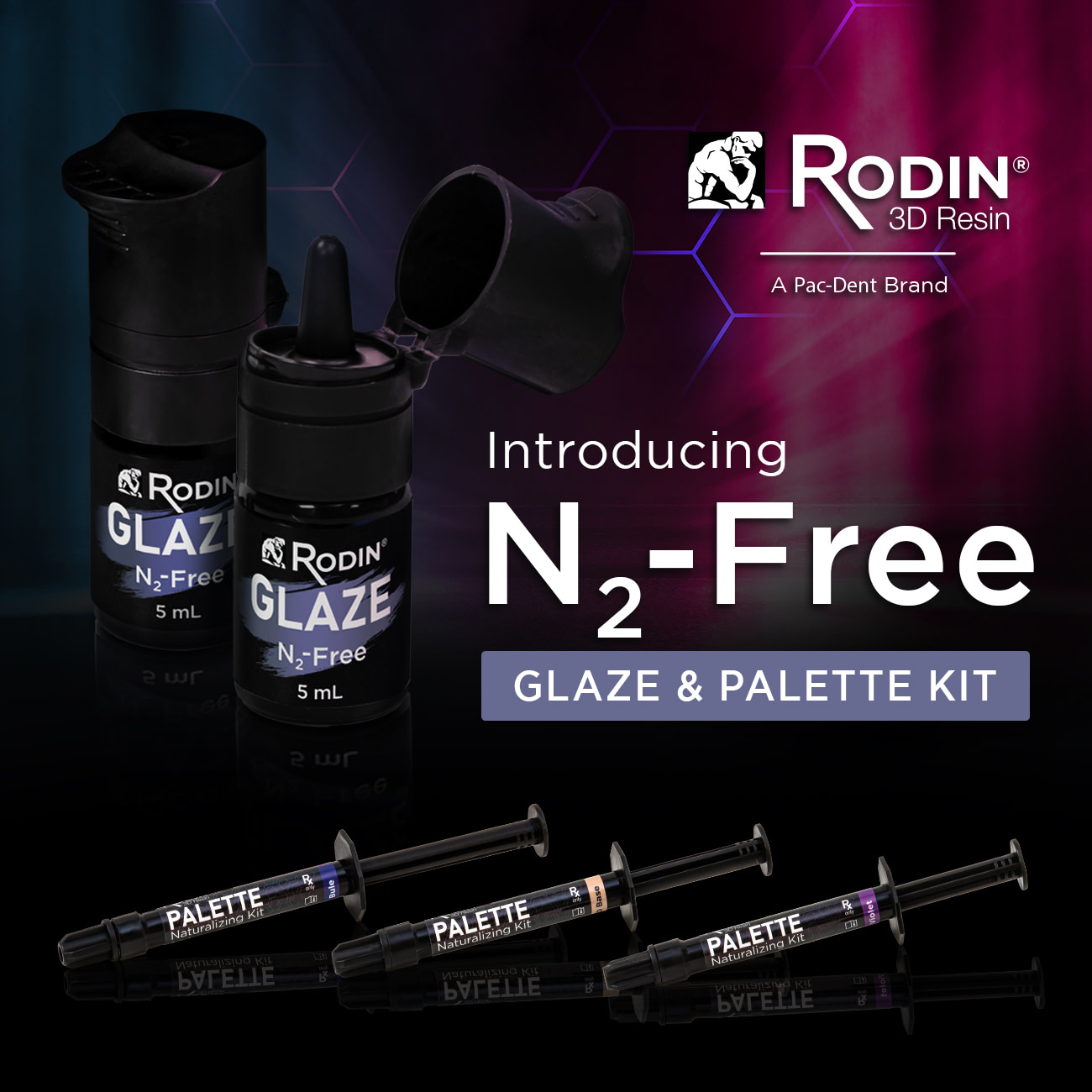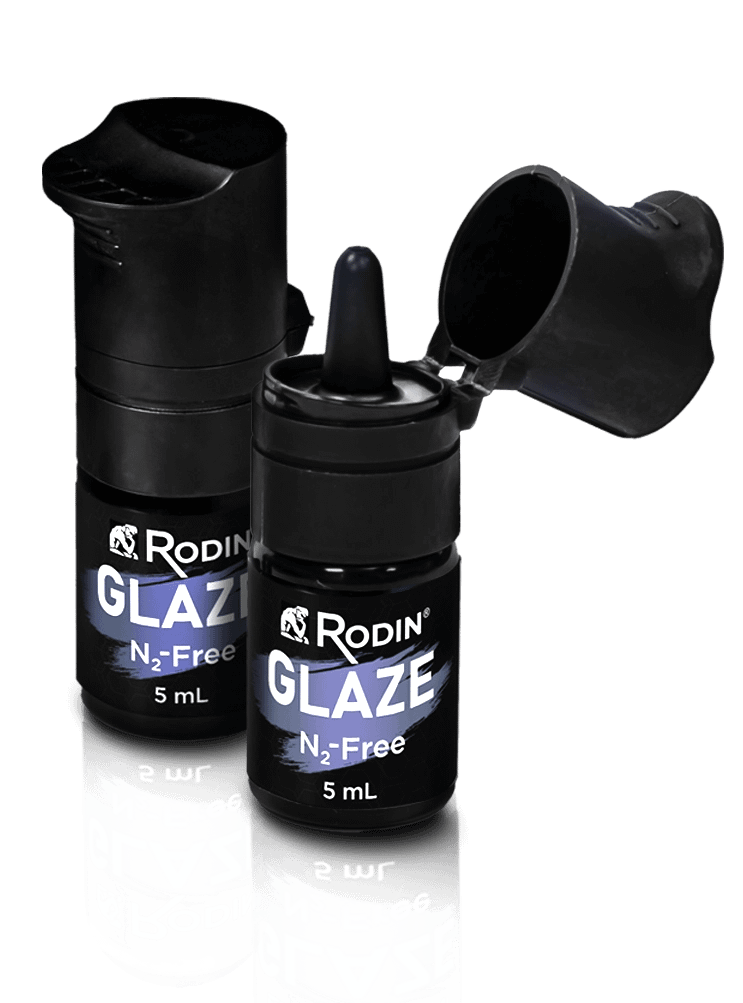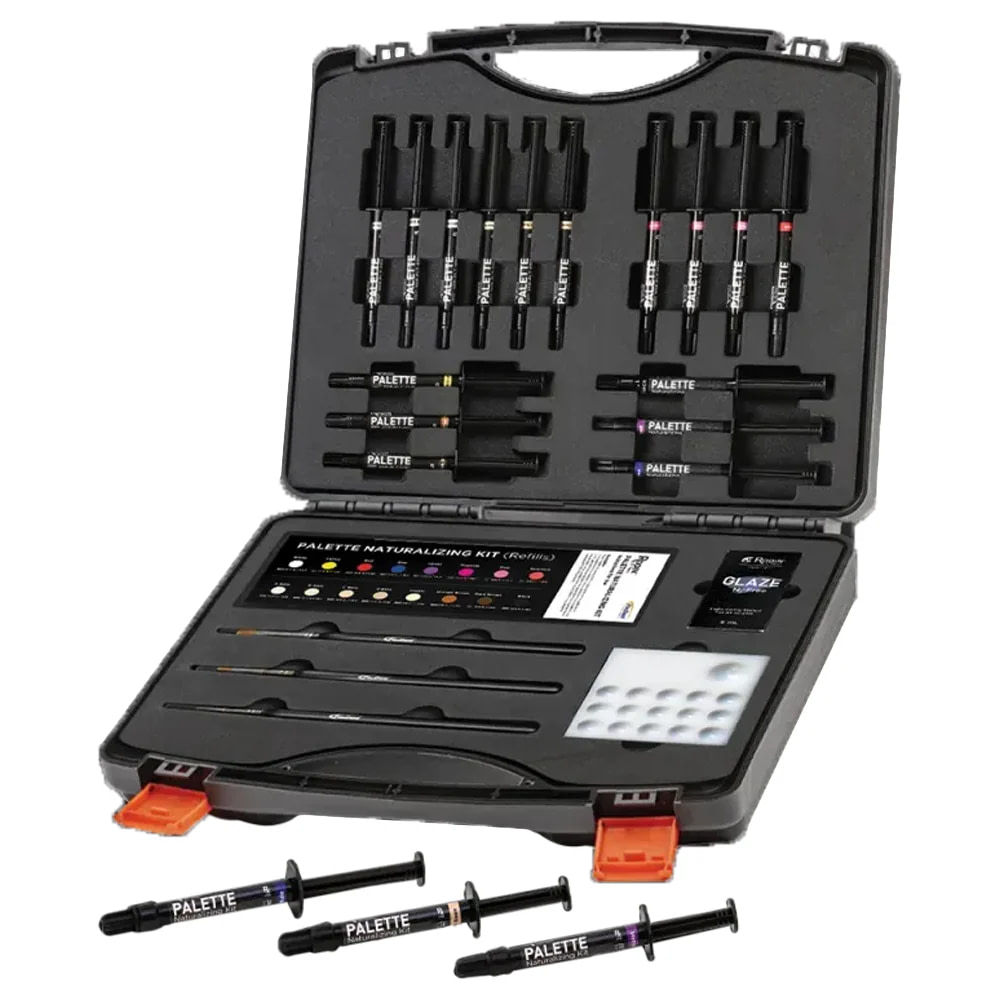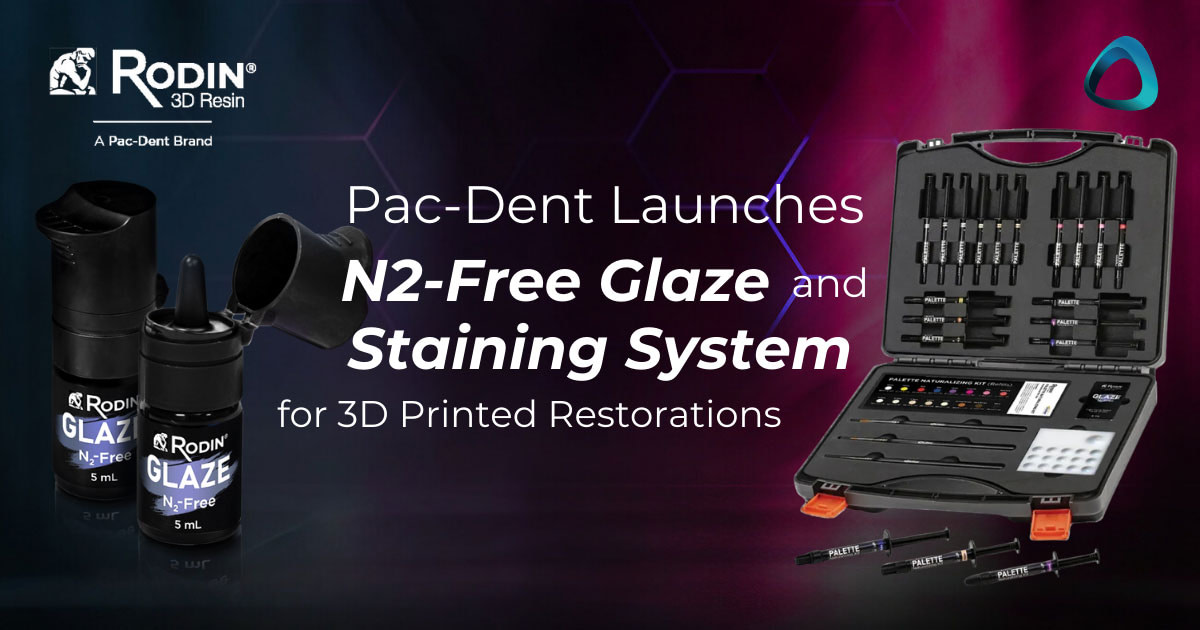Pac-Dent has just announced the release of their new Rodin Glaze N2-Free and Rodin Palette N2-Free Naturalizing Kit, aiming to solve a common challenge in finishing 3D-printed dental restorations: post-processing.
Let's take a closer look at what this system offers and how it might impact digital dental workflows.
The Challenge with Current Glazing Systems
One of the ongoing challenges with 3D-printed restorations has been achieving a natural-looking finish while ensuring complete polymerization. As it stands, printing restorations leaves a lot to be desired aesthetically. The results are often very monolithic, with zero gradation of color, and often dull.
This is why many clinicians opt to stain and glaze printed restorations with kits like Optiglaze. However, these traditional glazing systems (made for composite and PMMA) often struggle with oxygen inhibition layers, which can leave restorations with a tacky surface that compromises both aesthetics and longevity.
What's New with Rodin N2-Free?
The most significant innovation here is the system's ability to neutralize the oxygen inhibition layer without requiring nitrogen - hence the "N2-Free" designation. This addresses a key pain point in the finishing process for printed restorations.

The system consists of two main components:
Rodin Glaze N2-Free
A finishing glaze, Rodin Glaze N2-Free, is designed for multiple materials, including:
Rodin Palette N2-Free Naturalizing Kit
A staining system for customizing the appearance of restorations


Key Features of the Rodin N2-Free
Several aspects of this system stand out from a practical standpoint:
Curing Flexibility
The system works with curing times ranging from 40 seconds to several minutes, depending on your device settings. This flexibility could be particularly valuable in busy practices with varying workflows.
Material Compatibility
The broad compatibility across different restoration materials means practices won't need multiple glazing systems for different workflows.
Clinical Versatility
The system supports both intraoral and extraoral applications, which could streamline chairside procedures.
Practical Implications for Digital Workflows
The introduction of this system could impact digital dental workflows in several ways:
- Simplified Post-Processing: By eliminating the need for nitrogen in the glazing process, this could streamline the finishing stage of printed restorations.
- Improved Efficiency: The relatively quick curing times and broad material compatibility could help reduce the time spent on finishing procedures.
- Enhanced Predictability: The ability to apply characterization and glazing both intraorally and extraorally offers more control over the final aesthetic outcome.
Conclusion
While it's too early to make definitive claims about long-term performance, the Rodin N2-Free system appears to address several key challenges in finishing 3D printed restorations. The elimination of nitrogen requirements while maintaining high-quality results could make this an interesting option for practices looking to streamline their digital workflows.
While this product shows promise, we always recommend thorough evaluation of any new system in the context of your specific practice needs and existing digital workflow. Stay tuned for hands-on testing and detailed reviews as we get more experience with this system.
Have you had experience with nitrogen-free glazing systems? We'd be interested in hearing your thoughts on how they compare to traditional options.


This is a break through in the field of dentistry I don’t mind joining your research team on dental biomaterials.